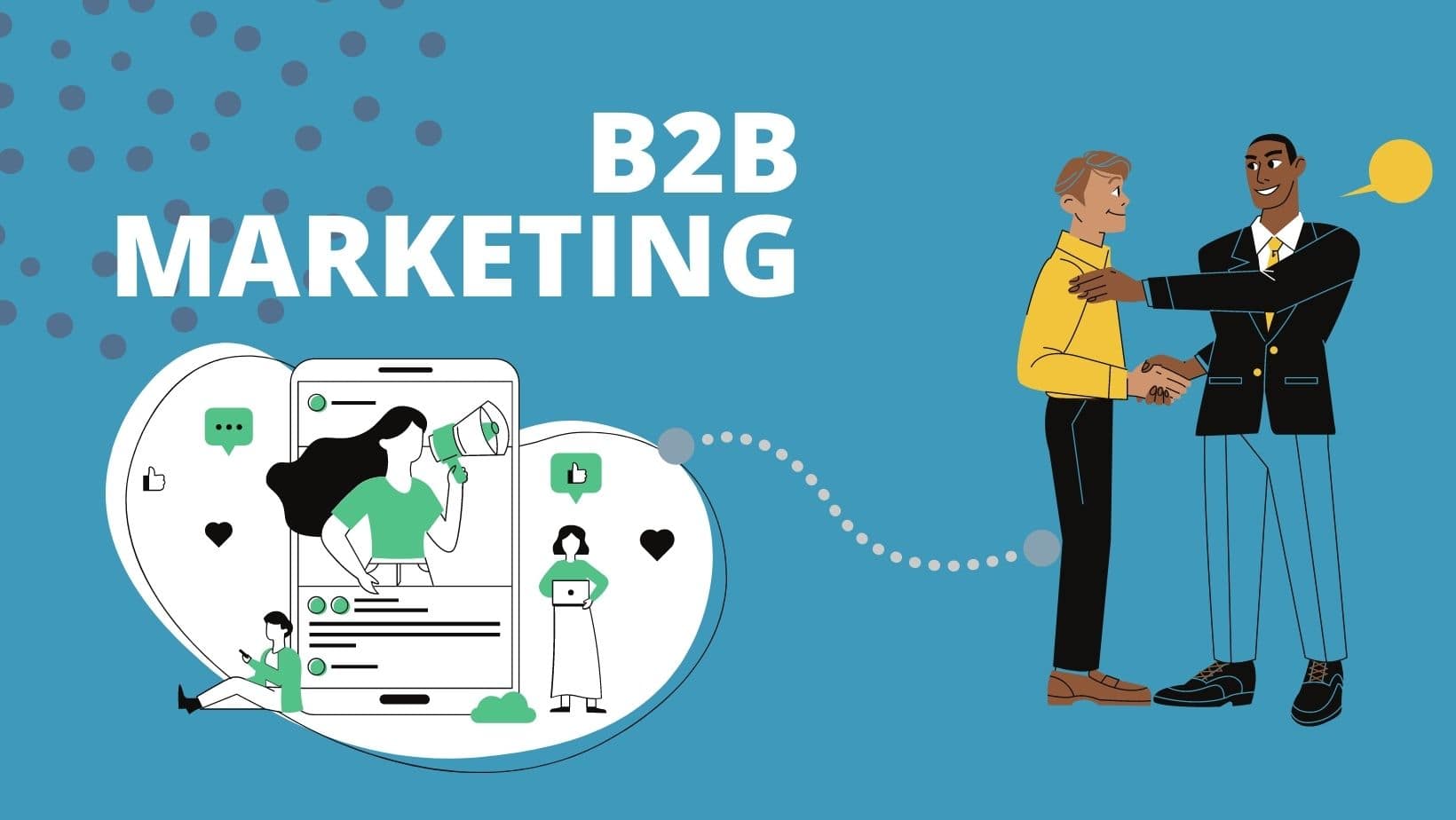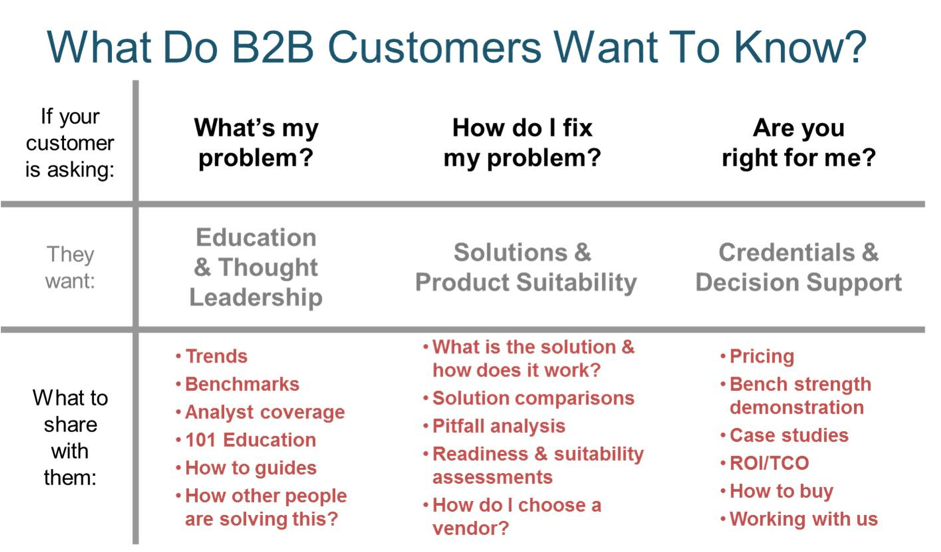
Also known as B2B marketing. When a company does business with other companies and not with the end-users directly, it is known as B2B marketing.
In early days it was known as Industrial Marketing. But, in the late 1990s, B2B marketing replaced Industrial marketing.
Of course, B2B is not limited to products but is very much applicable to services as well.
These days we hear SaaS (Software as a service), Paas (Platform as a service). They are all examples of B2B. Buying an enterprise software licence, furniture manufacturer purchasing raw materials etc, again falls under B2B marketing.
Page Contents
B2B Marketing definition
In one of his books, marketing guru, Prof Kotler, defines marketing as “Marketing is a social and managerial process by which individuals and groups get what they want and need through creating, offering and exchanging products of value with others.”
So b2b extends the above definition, but this time, from one business to another business and not from one business to its end-user.
According to Gartner, “B2B marketing is a collection of techniques for marketing to business buyers. Its goal is to improve lead quality, sales acceptance of leads and conversion rates”
What is B2B marketing?
When a business tries to sell its product or services, it goes through a chain of processes.
Also, the stake is quite higher than business to consumer as most of the time it turns up to be a high value purchase.
The buyer is not an individual like you and me, in this case. But there is a group of people who decide for their organisation. They know what they intend to buy.
Organisations often need services or products where the cost involved is pretty high. For example, procuring laptops for employees. The company (buyer) now searches for another company (seller) who can provide them according to the specification. So here one business is getting engaged with another business.
Companies have a purchasing department which invites bids from the seller. The bid winner then supplies the product or the services to the buyer.
Steps which a buyer follows:
Need Identification
This is the first step in any organisation. Identify the need of the product or services in the first place. For example, let’s say an ABC company has just started, the job of managing employees is not much and is handled by managers themselves. However, when that company grows to 1000 employees, there is a “need” now to have a full-fledged HR department.
Prospecting
If ABC company outsources their HR department, it is now a potential target for those companies which specialise in enterprise HR services. This is a stage when ABC talks to service providers and understands the know-how.
Deciding
Simultaneously, ABC is learning about several seller organisation’s offerings. According to the need and preference, ABC will decide whom they will go with. Subsequently, both buyer and seller come to an agreement and the deal is finalised.
Post-sale engagement
This is really important. Once everything is okay, now the ABC will need a hand holding for initial few weeks or months. It is for the seller to ensure that this process goes smoothly and a complete knowledge transfer should be done.
This stage is also critical because most of the cross selling and upselling from the buyer side happens here.

B2B marketing strategies
In a B2B market, a seller should well know their potential buyers. To have a robust plan, a seller needs to take these steps –
Buyer Personas
Every company has a vision and mission. Whether the company wants to serve a large number of clients or wants to be a niche player, this should be pondered upon from the start.
So, the objective is derived from the mission statement.
For these purposes, a buyer persona or a “look-alike” profile of a seller is created. It helps in narrowing down and targeting buyers.
Analysing competition
Any strategy is incomplete without a proper understanding of the competition. Of course, one should not go on copying them but every aspect like, “how the competition is targeting”, “what are the costs involved”, “kind of services or product they are offering” need to be analysed properly.
A research teams are set up. A group is dedicated towards competitors’ analysis and another for market research.
Pricing
Obviously, one of the most important components. However, the beauty of B2B over B2C(Business to Consumers) is that buyers are not price sensitive. A buyer can happily accept the premium if the product is in line with their business goals. ROI is critical and if the product or service is not yielding the ROI (Return on Investment) a buyer is expecting, then they would not buy them, even if it is cheaper than the competition.
USP (Unique selling proposition)
A buyer must always think in terms of delivering value. When a competition is offering almost the same, how is my proposition going to be unique?
For an already established brand, it becomes easier, but for a new entrant, more commitment and dedication is expected. These all generate trust, which ultimately makes the buyer comfortable and satisfied.
Basically, owning the problem that a buyer is facing, delivering the service or a product that is going to exceed the expectations.
The most challenging task a seller faces is to make the product or services visible across mediums. It is common knowledge that with increased reach, lead generation increases rapidly, too.
They are of two types:
Offline – The traditional method of sales at work here. Print media, television, radio, events, seminars and the likes.
Online – Technology, especially the internet has opened various channels to showcase the offerings. One can use social media like Facebook, Instagram, video platforms like YouTube, Twitch, etc. A company must have a website where prospecting buyers learn about the offerings.
One of the most common and effective methods to drive traffic towards the website is content marketing.
Content Marketing in B2B
Blogs
Writing articles on the product or services continuously will make the buyers well informed and generate trust. If done properly, blogs drive an inordinate amount of traffic to the company’s website, where sellers can have their product portfolio, FAQ (Frequently Asked Question) to engage with them.
White papers, case studies
These will further engage buyers, but this time with past implementations, the challenges and how they were handled. Simply put, they provide more technical insight.
Videos
With the help of interesting videos, buyers will have a deeper understanding of how the system works. Much better than reading, videos raise the interest level even more.
Irrespective of offline or online marketing, a company must also leverage their voice of customers.
Testimonials
Once a buyer is satisfied, a testimonial vouching for the company carries more weightage. Potential buyers always get swayed by these.
Reviews
Similar to testimonials, a positive product or service review works as a stimulus for the prospecting buyers. A video review is even better to increase the engagement level.
Feedbacks
This is crucial. Always listen to the feedback and try to sort out the problems. Potential buyers most of the time will be interested in how you have tackled the situation.
Feedbacks also helps in making the services or the products better.
B2B Models
There are two kinds of models:
Vertical b2b – this is the model where buyer and seller belong to the same industry.
Say an automobile company. The supplier of parts and distribution of finished products creates one supply chain for that company.
Furthermore, they can be further bifurcated as upstream and downstream. With upstream being a supplier of parts and downstream being wholesaler or dealer of the finished product.
Horizontal b2b – It works as an aggregator for various industries with lots of sellers and lots of buyers. The marketplace themselves will own none of the products but provides a platform to bring buyers and sellers together. One great example is Ariba, procurement and supply chain solution provider.

Examples of B2B marketing:
FedEx
The logistics behemoth has increased its followers on social media, reaching around 210,000 people. We know FedEx as a plain vanilla logistics company. Then it strategically started posting pictures of outstanding locations having the FedEx logo in the background. Constantly updating its social media page to provide a unique experience. Needless to say, followers kept on increasing and so does the opportunity for the company.

Bridgestone

A famous tyre company. But they make very useful educational videos, so much so that a team is dedicated to it. Everyone sees great value associated with this, and according to them, people themselves had demanded those videos. Advertising is not about flashy and eye-catching ads, but an offbeat method works much better. When one can see the visuals, understand the technicalities, the process of decision making has already been simplified. Buyers have already found the solution even before the company actually engages with them.
Snowflake’s website
Website is used to showcase your offering. Snowflake, a popular data warehouse company, does more with that. It uses a clean interface and a simple, human understandable language. This gives a prospecting buyer a very positive impression that even a non-technical person will get the message.
Without overwhelming the visitors with the mind-boggling data, showcases the product and services, tells “how they can be of help to the organisation”.
The interface catapults the level of interest and, in turn, engagement with the company.
Pitfalls to avoid in B2B marketing
Without a target
Without a proper target, a business is as good as lost. And to target appropriately, there is a need to segment the customers (buyer organisations) they want to serve.
Going all in
Promotion is good. Businesses promote by blogging, videos and social media. But it is not a good idea to be present everywhere when the organisation is not having that kind of firepower to entertain and serve all. Better to have an appropriate plan and a strategy according to the resources available.
Not being data driven
Hunches, guess work, emotions won’t work. Unless the organisation has utilised the data to the fullest, they have many things to lose. A data driven approach tells us what is working and what is not.
Unable to re-target
Businesses change, the requirements change. Adapt to the situation, evolve and retarget the potential buyers.
Not focusing on the pain points
A buyer never buys a product just for the features, they buy a solution to the problems.
Merely focusing on what your offerings will never be beneficial. Rather, focus on what you can do for the buyer in reducing or eliminating their problems.
Conclusion
The B2B market is pretty vast, which makes B2B marketing even more complex. A buyer is looking for value addition and not merely saving money. Often, a higher prex is justified when the service or the product matches the organisation’s aim.
For the seller, it is imperative to accommodate and be resilient in adopting the client’s requirements. This would be a great start to a long relationship and a win -win situation for both buyer and seller.